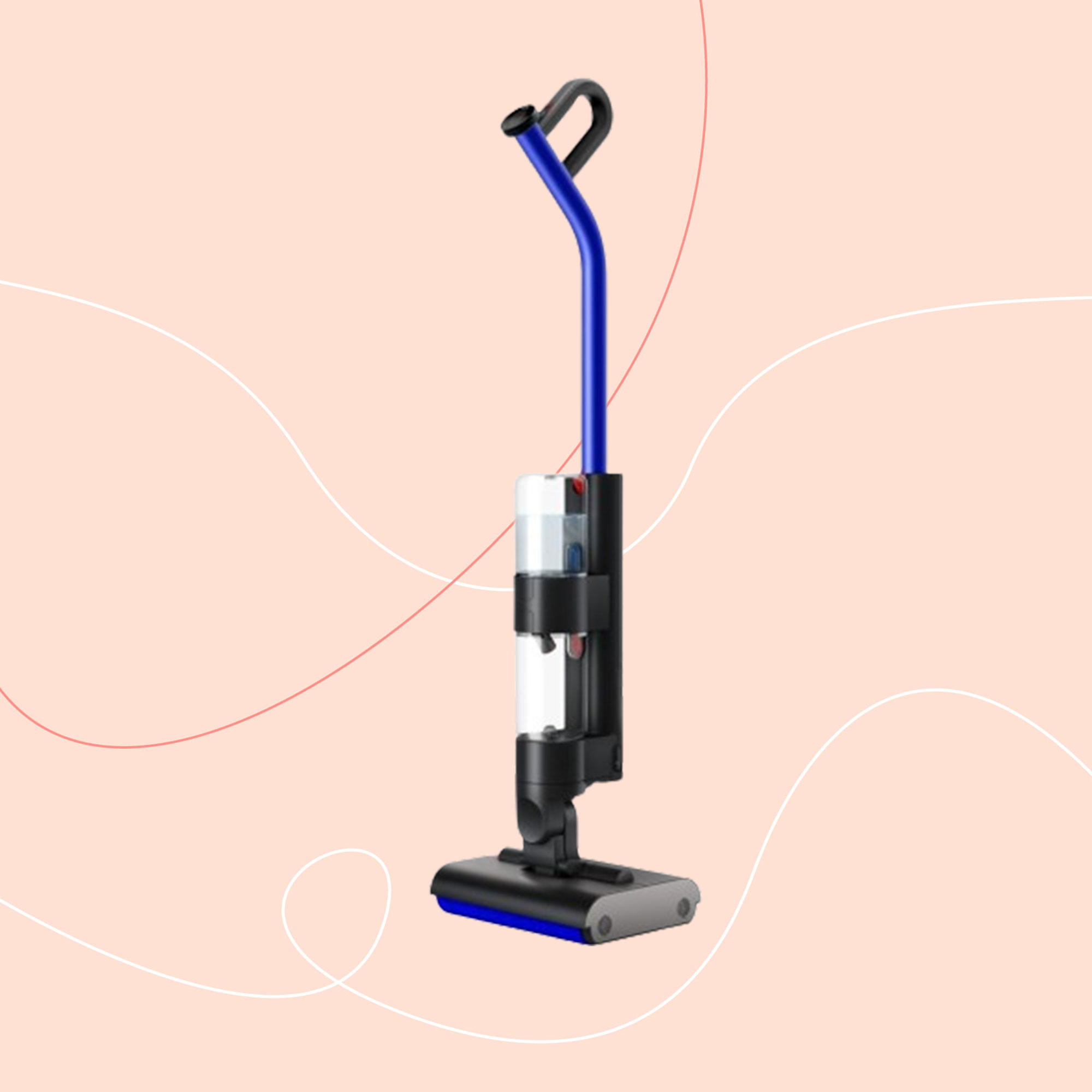
I’ll be the first to admit that the idea of a wet floor cleaner has never really excited me. I’ve never had any problems using a combination of my vacuum cleaner and mop to tackle everyday dirt and spills on my hard flooring, after all. But I am a huge fan of Dyson’s innovative engineering, so when I was given the chance to review the brand’s very first dedicated wet floor cleaner, I was intrigued.
Of course, the Dyson WashG1 isn’t the brand’s first foray into wet floor cleaning. The brand has already successfully combined the engineering of the best vacuum cleaners with the cleaning abilities of the best mops with its Dyson V15 Detect Submarine, but it seems as though Dyson wants the WashG1 to stand alone - not as a wet vacuum and not as a mop, but as a specific wet floor cleaner. And a wet floor cleaner with a self-cleaning mode, no less.
At £200 cheaper than the Dyson V15 Detect Submarine, the idea behind the so-called ‘wet floor cleaner that doesn’t suck’ is that it will pick up wet spills, dry debris, and dried-on stains simultaneously thanks to its two individually-powered rollers that counter-rotate whilst being pumped with water. But is this floor cleaner worth the (still rather hefty) £599 price tag? In my opinion… yes and no.
Dyson WashG1 product specs
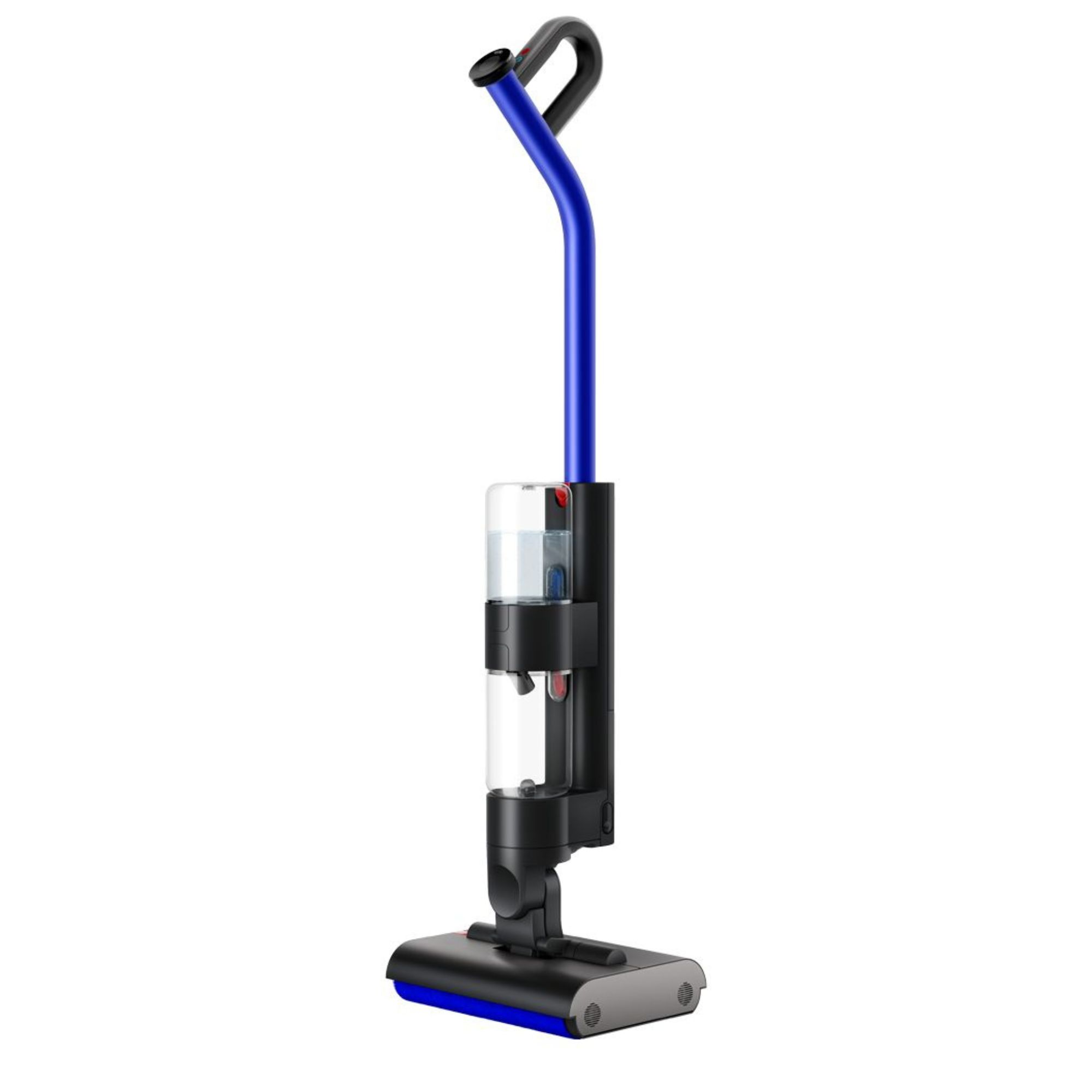
- Weight: 4.8kg
- Max. run time: 35 minutes
- Bin volume: 1-litre clean water tank, 0.8-litre dirty water tank.
- Charge time: 4 hours
- Modes: 3 modes + MAX setting
- In the box: Machine body, handle, charging dock, charger
- RRP: £599
Unboxing, setting up and first impressions
The Dyson WashG1 was packed neatly and efficiently, with no excess packaging. Instead, the five components - the handle, machine body, charging dock base, charging jack, and charger - were kept safe in a cardboard shell.
When removing the components from the box, though, I must admit that I was a little surprised. Although I knew from the specs that it weighed 4.8kg, I definitely had to put some welly into lifting the main machine base from the box.
Assembly of the Dyson WashG1 was as easy as pie, though - especially as the box also came with helpful assembly instructions printed on the side. As a result, I didn’t need to consult the more in-depth instruction manual for this step.
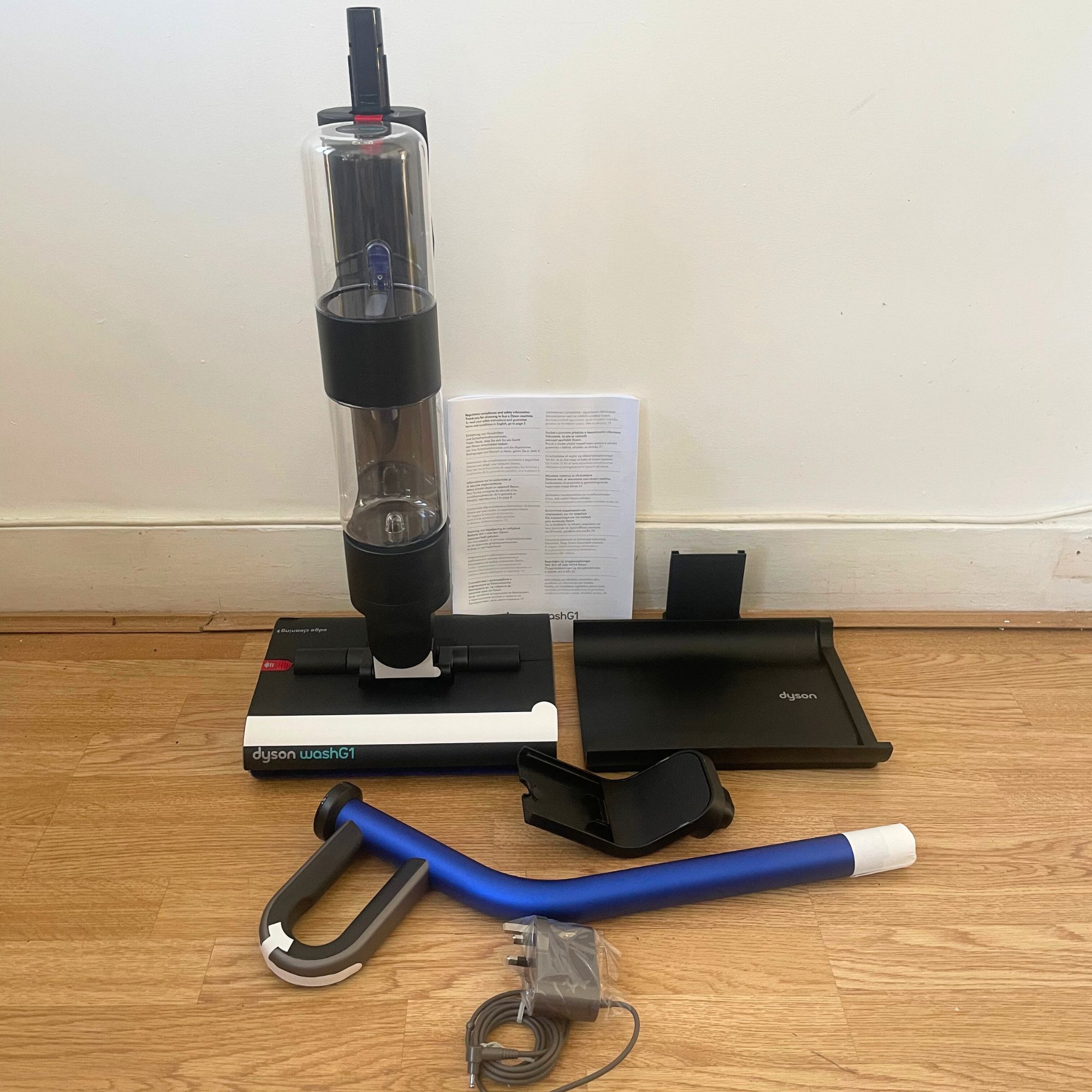
Once I clicked everything together, I was able to see the true scope of the machine. And in true Dyson form, the whole machine looked sleek, sophisticated, and - surprisingly - felt much lighter when the handle was attached. The LCD screen was also large enough for me to see what was written without my glasses but not so big that it overpowered the handle.
The big elephant in the room for me, though, was the size. While I can see that Dyson has worked hard to streamline it as much as possible, the base is still clunky. This will limit where you can store the appliance, and as someone who has limited storage options in my home, I had no choice but to leave it out on show in my dining room throughout the testing process.
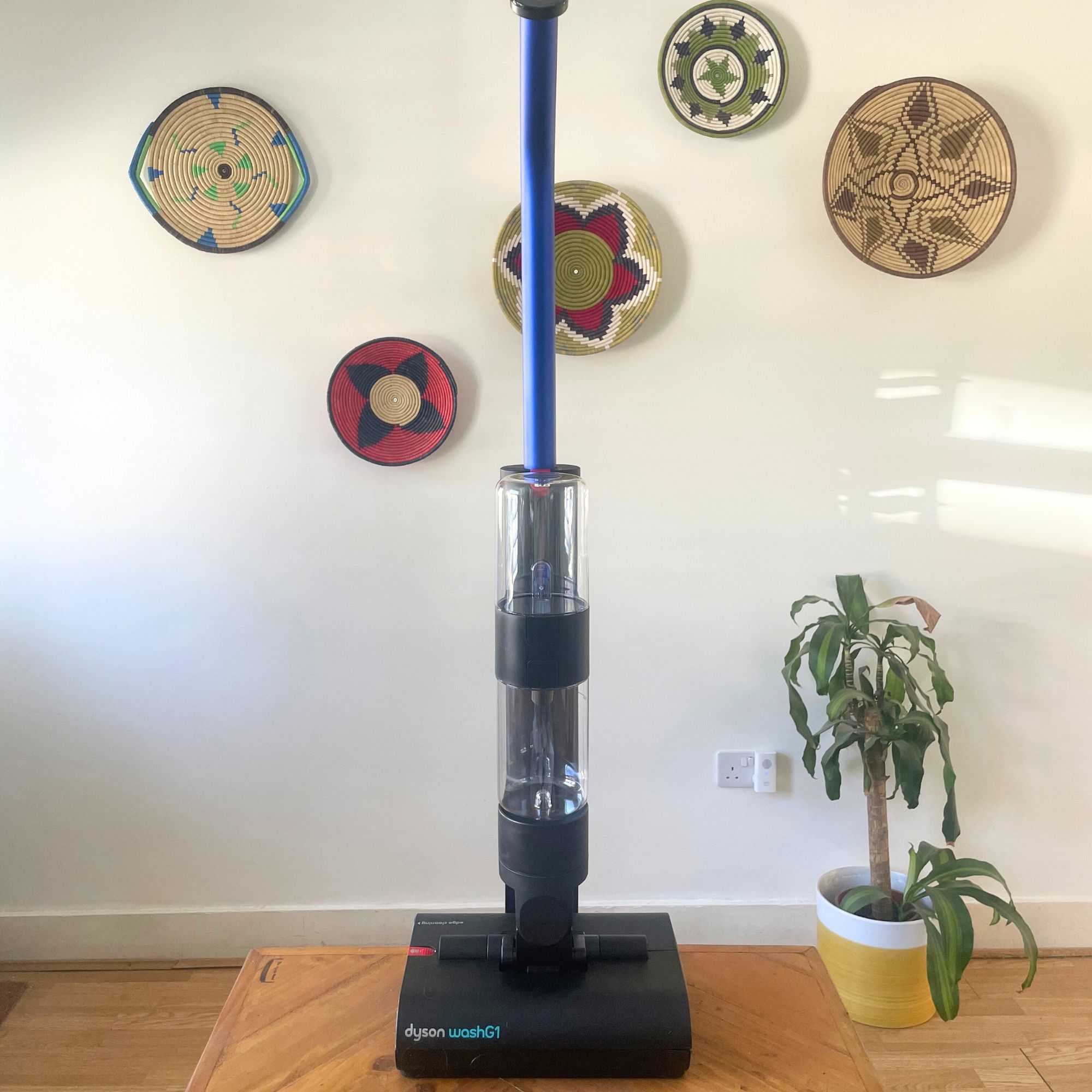
The charging cable is long, though, so if you have a cupboard nearby, you could hide it the same way you would store a vacuum cleaner. As long as you have space alongside your other appliances, of course.
It’s worth noting that you can also download the MyDyson app and connect the machine by scanning the serial number to assemble the Dyson WashG1. The app also has information on caring and maintaining the appliance and using the machine, which is handy for those who don’t want to read pages and pages of the instruction manual.
Using the Dyson WashG1
Before using the Dyson WashG1 for the first time, I had to fill up the clean water tank. To do this, I removed both tanks and the tank collar from the machine. I then pressed the blue button to remove the clean water tank and unscrewed the lid.
Next, I filled it up to the ‘MAX’ line visible on the side. According to Dyson, this water is then fed to 26 hydration points by a pulse-modulated pump for even water application to the rollers. The aim of this is to clean floors hygienically and efficiently every time.
When that was done, I could get started. And to ensure a thorough test of this new product, I wanted to try it out during general day-to-day cleaning and more targeted cleaning of wet and dry spills.
And as I live in a Victorian terrace house with a bathroom on the ground floor, I was able to use the WashG1 on every ground-floor surface in my home. This included laminate flooring, kitchen tiles, and bathroom tiles.
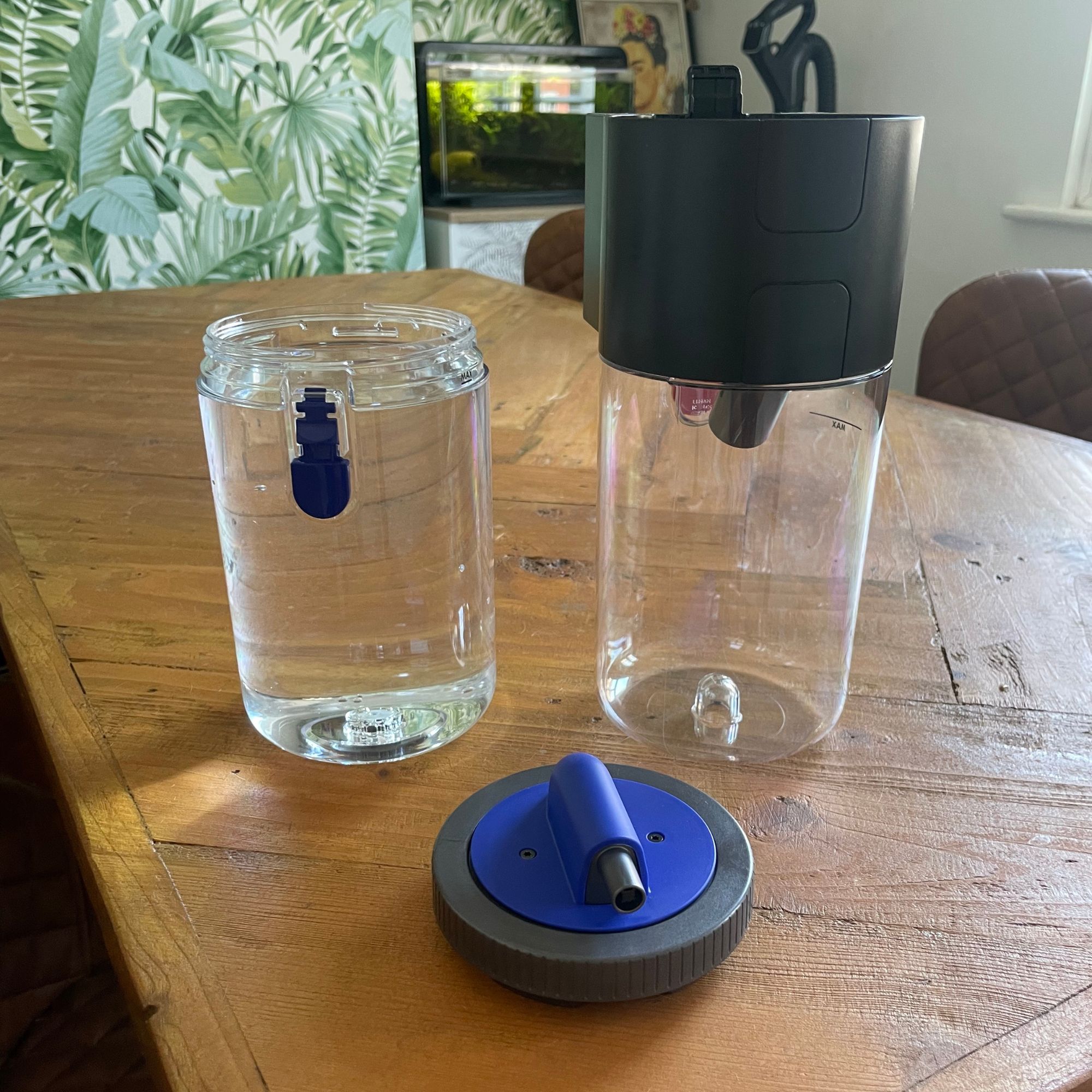
General cleaning
I started with a general once-over of the whole ground floor of my home - moving from the front two rooms of laminate to the back two of tiles. For full transparency, I had vacuumed these floors the day before but had not mopped in a few days, so was eager to see how well it would fare in a house with two humans and a dog.
Turning on the machine was easy enough, and when you want to start cleaning, all you need to do is select the mode level required for the job. From reading the Dyson manual, I understood that:
Level one (one water droplet on the screen): For debris, hair and light spills.
Level two (two water droplets): For mealtime messes, spills, and wet footprints.
Level three (three water droplets): For sticky spills, muddy bookmarks and dried-on stains.
MAX: For extra hydration on stubborn stains.
For my dining room and living room laminate, I opted for level one as we rarely use the dining room, and the large majority of our living room laminate is covered by a rug. Immediately, I was taken by the machine's weight and manoeuvrability - but I the weight was still a sticking point for me.
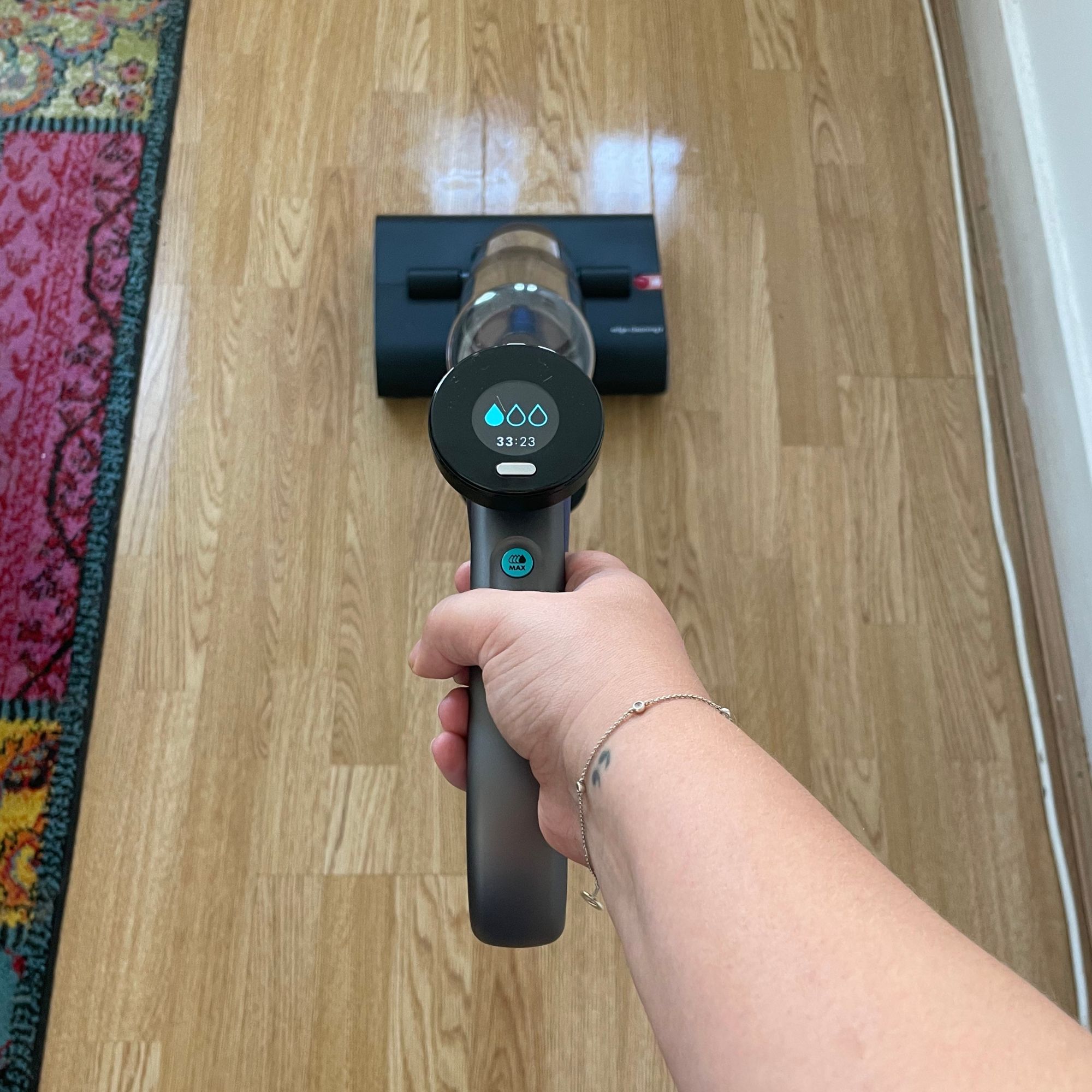
While I had no problems pushing the WashG1, there did seem to be some resistance as I started to roll it over my laminate flooring. There’s no other way to describe the feeling other than… mechanical. But as the WashG1 is powered by motorised rollers, I guess that’s to be expected.
As I cleaned the laminate in my dining room, I was however impressed with the pickup of dust and the overall appearance of my flooring, and I was pleasantly surprised to see that it didn’t leave my floors soaking wet.
And while this may be a bold statement, I can safely say that I don’t think they’ve ever been so clean, and the overall result was much cleaner than mopping has ever been. The first problem reared its head when I moved into my living room, though.
As my lounge is just over 3x3m, I don’t have a lot of space to work (or clean) with. Couple that with the fact that I have a very large rug and various pieces of furniture in the room, there was not a lot of space for the WashG1 to work its magic.
And while I was able to lift the edges of my rug and clean underneath with ease, getting around or underneath solid furniture was impossible - especially as there’s limited freedom of movement with the WashG1. It only really likes to go forward and back and struggles to move diagonally or into tight corners.
This struggle continued when I made my way into my galley kitchen, which has terrazzo tiles that (both conveniently and inconveniently) hide a huge amount of dirt. As this is a high-traffic area for the humans and dog in my house, I chose to step up the machine to level two.
Although there wasn’t an immediate visual difference in cleanliness on this floor, I was able to see the true power of the WashG1 when I tackled the edges of my kitchen with the machine. Equipped with impressive edge technology (albeit just on one side of the machine), it was able to get right up to the backboards and pick up dust and grime we’ve struggled to get to in the past.
However, the Dyson WashG1 absolutely refused to clean a tiled step that leads to the garden that we have in our kitchen. As the step was smaller than the width of the head, it immediately cut out and turned itself off. So, this was disappointing and something to consider if you have similar in your home.
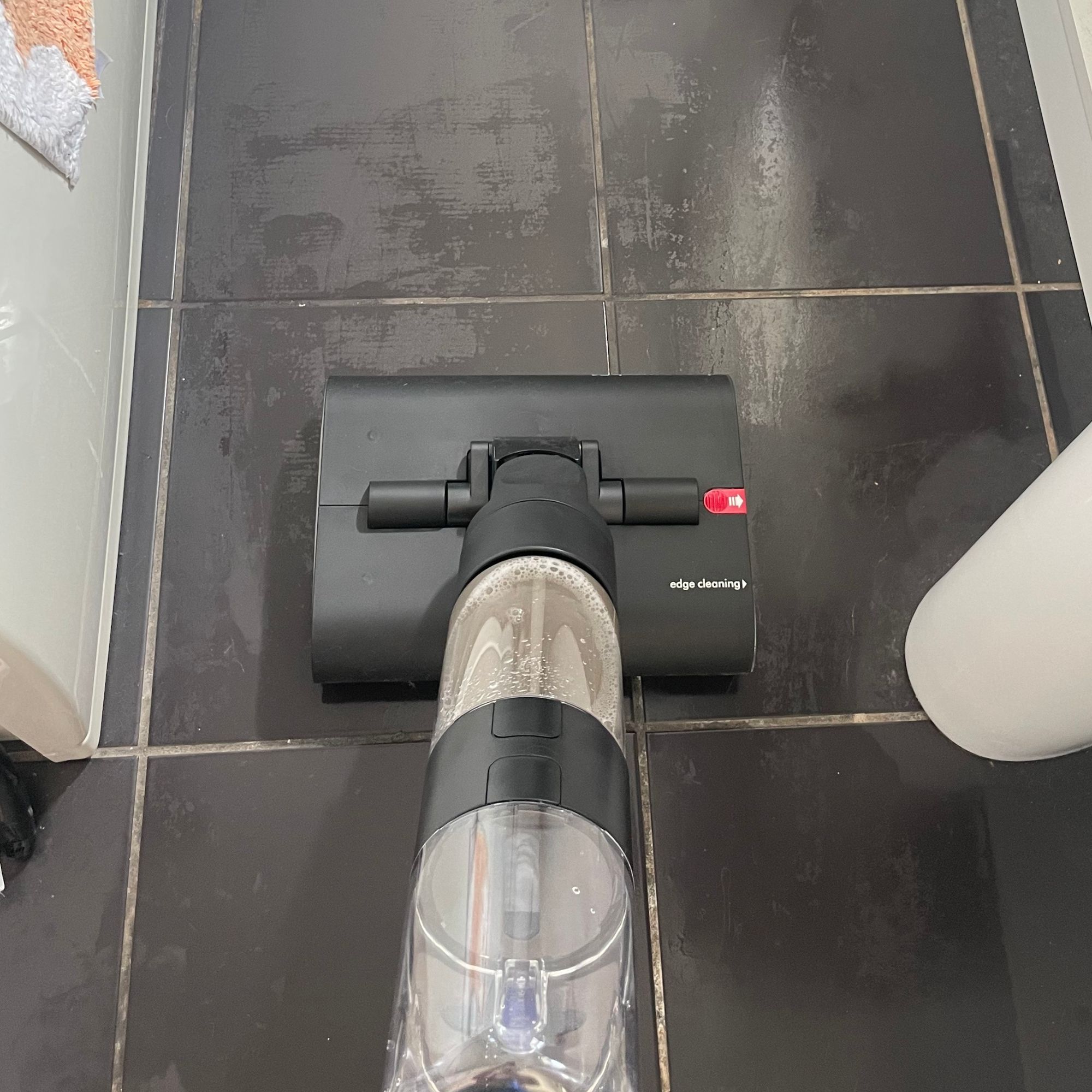
But spurred on by clean floors, I headed into the bathroom and once again pushed the wet floor cleaner forwards and backwards on the tile. Again, it left behind a wet wake - but not so wet that the floor was soaking. And I didn’t have to worry about battery power either, as the LCD screen kept me up to date with how long I had left before needing to charge, and I had more than enough to clean the whole ground floor of my home.
When this general cleaning session was done, I then inspected the dirty water tank for the first time. The end result? A disgusting muddy smoothie-like canister of dirty water that was equal parts impressive and horrifying at the same time.
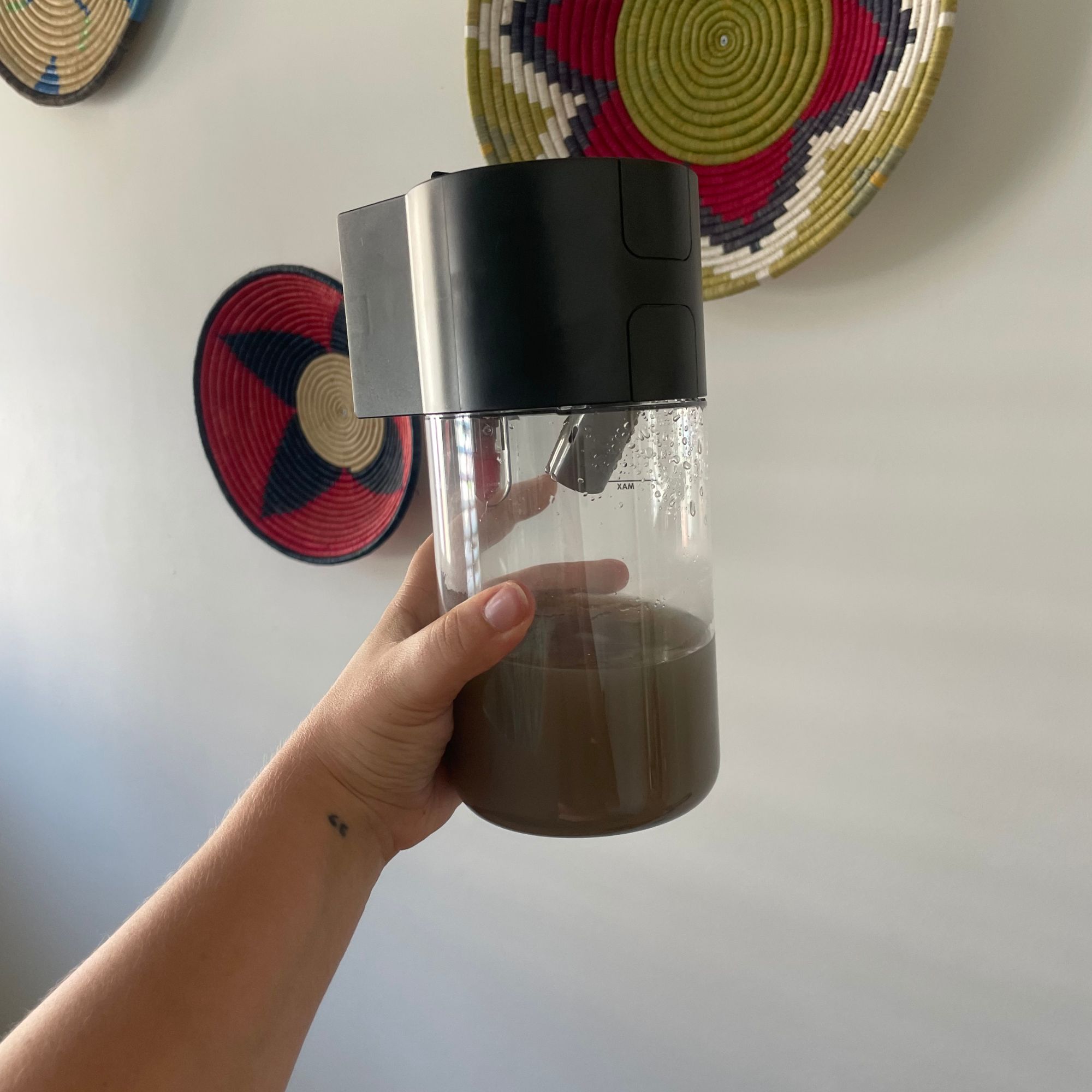
Cleaning wet and dry spills
My first test of cleaning wet spills with the WashG1 happened by chance, as my dog decided to roll in fox poo and desperately needed a bath as a result. Normally, I would put towels down on the bathroom tiles to mop up his soggy paws - but with the cost of running a washing machine, I have been considering other options to avoid putting on a wash solely for his mucky towels.
So, as I knew I had the WashG1 at my disposal, I decided to forego the towels and leave my tiles bare. As you can imagine, the floor was soaking wet when I got him out of the bath, but I was incredibly impressed with the work of the Dyson WashG1.
The wet floor cleaner not only cleaned my bathroom floor (and the dirty water tank at the end proved as much), but it also picked up loose dog hair in the debris tray. The floors were also as dry as a bone just under five minutes later (4 minutes and 47 seconds, to be exact).
My only qualm, once again, was the size of the cleaning head. Although I had pools of water in between my bath and the toilet base, the WashG1 was just too big to get down there. As a result, I also had to use my mop.
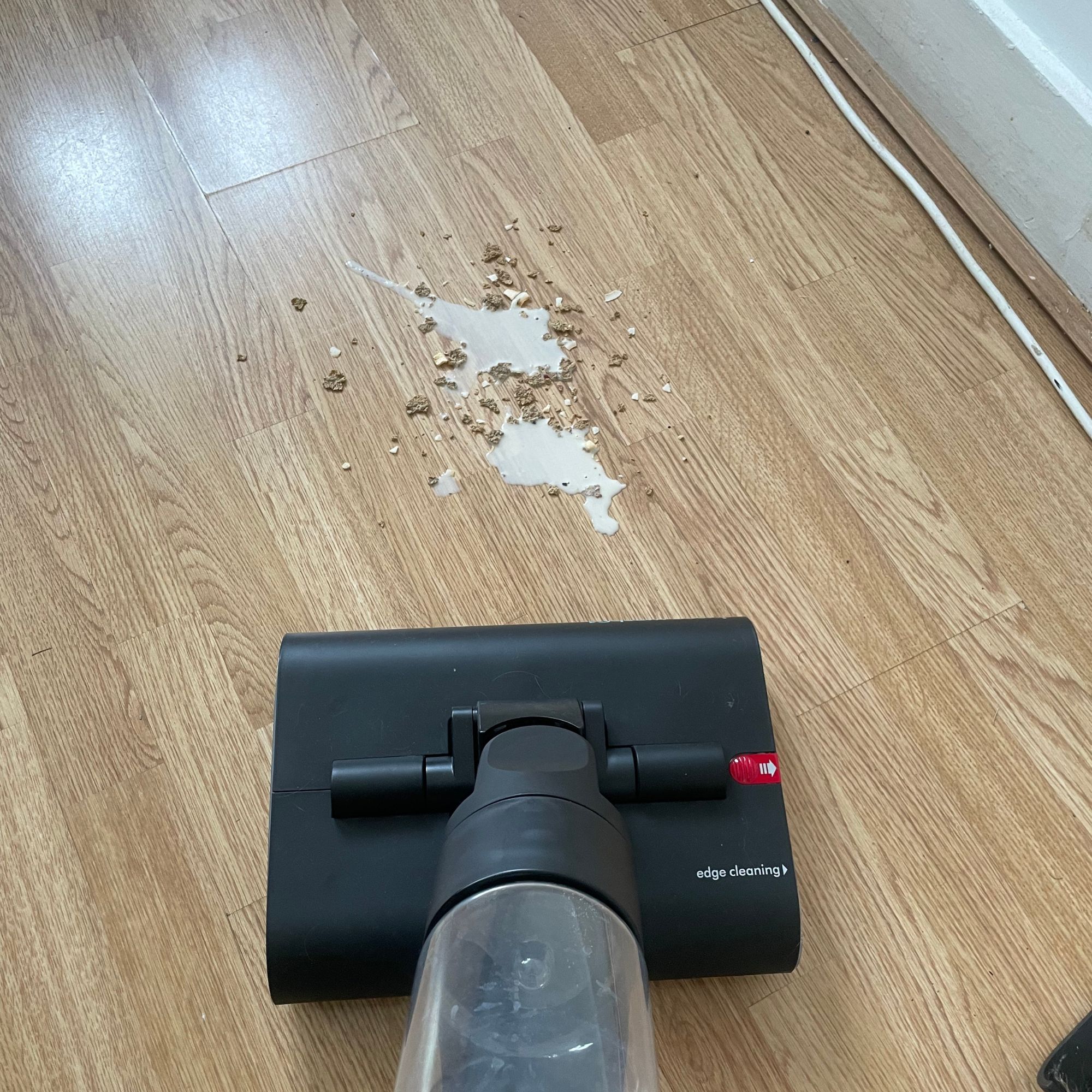
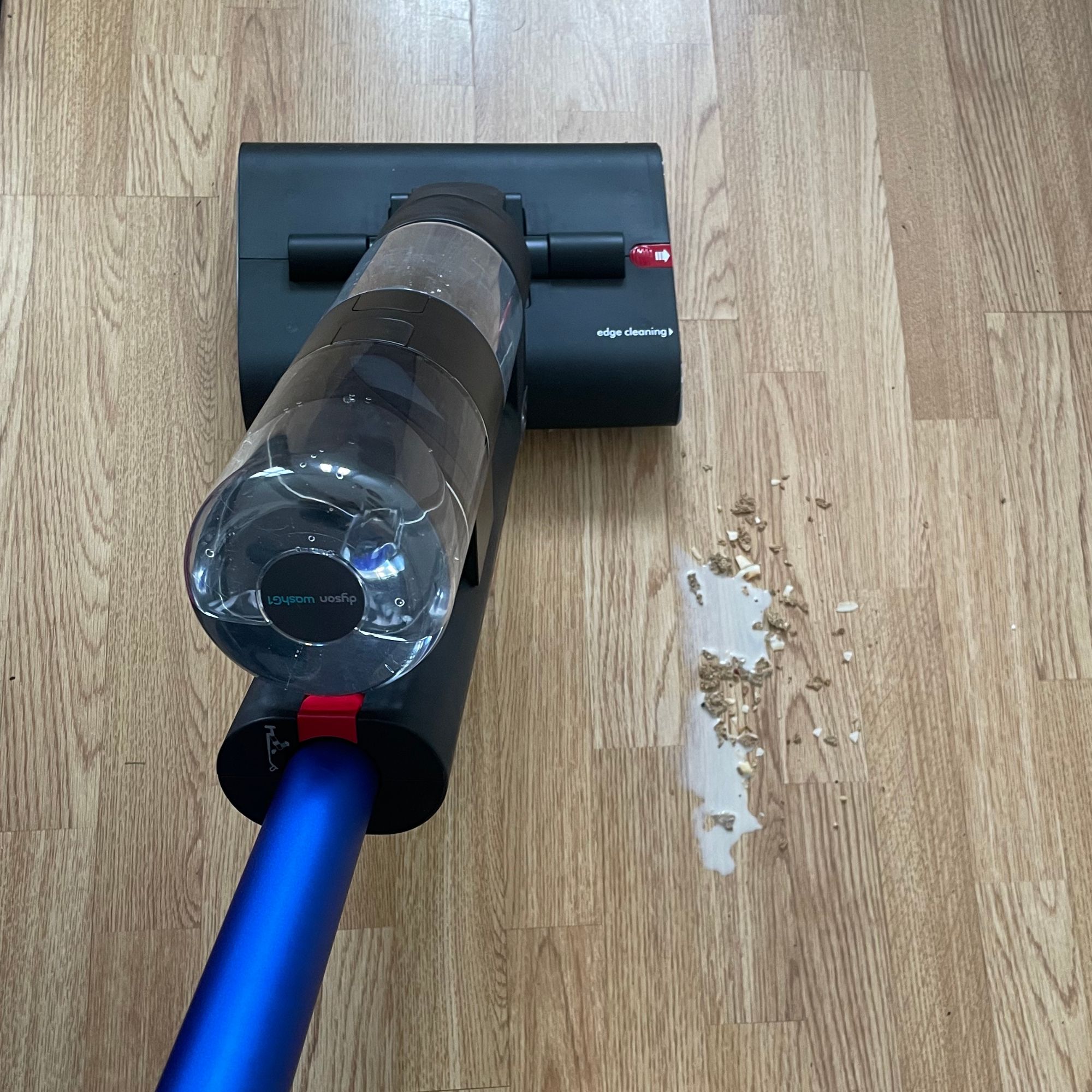
My second test was a little more controlled and inspired by my sister, who seemed excited about the WashG1 when speaking to her about it. She immediately saw the appeal as the mother of a one-year-old. In fact, she specifically mentioned that it would work wonders at breakfast time when my nephew chose to throw his soggy Weetabix on the floor.
So, to replicate this scenario, I scattered some cereal on the floor and poured a bit of milk on there for good measure. I knew that if I were to clear up the mess using a mop, it would simply push the larger pieces of cereal around the floor, and I’d likely have to get out my vacuum, too.
Cleaning this up was light work for the Dyson WashG1, though. In fact, I let out an audible ‘wow’ when I passed the machine over the muesli and milk. The machine picked it up as though it was nothing, and it only took one pass to pick up every crumb and every drop of milk.
Then, I decided to grab some tomato sauce and squirt that over my floors. This is a test that Dyson performs themselves, so I had to give it a go, too.
Like with the cereal and milk, the WashG1 had no trouble picking up the tomato sauce. The process was smooth and extremely satisfying, and once again proof that the wet floor cleaner has been designed with efficiency in mind.
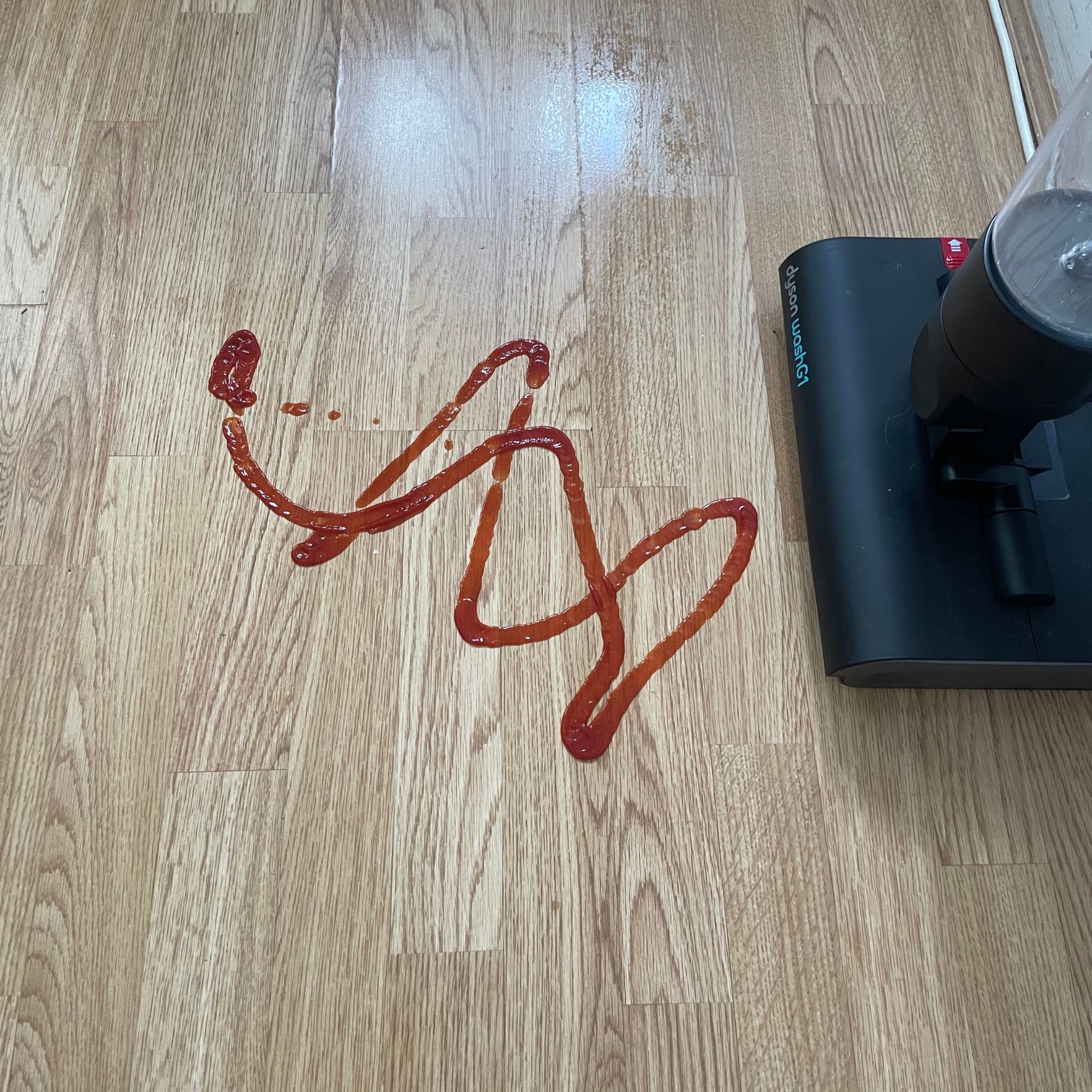
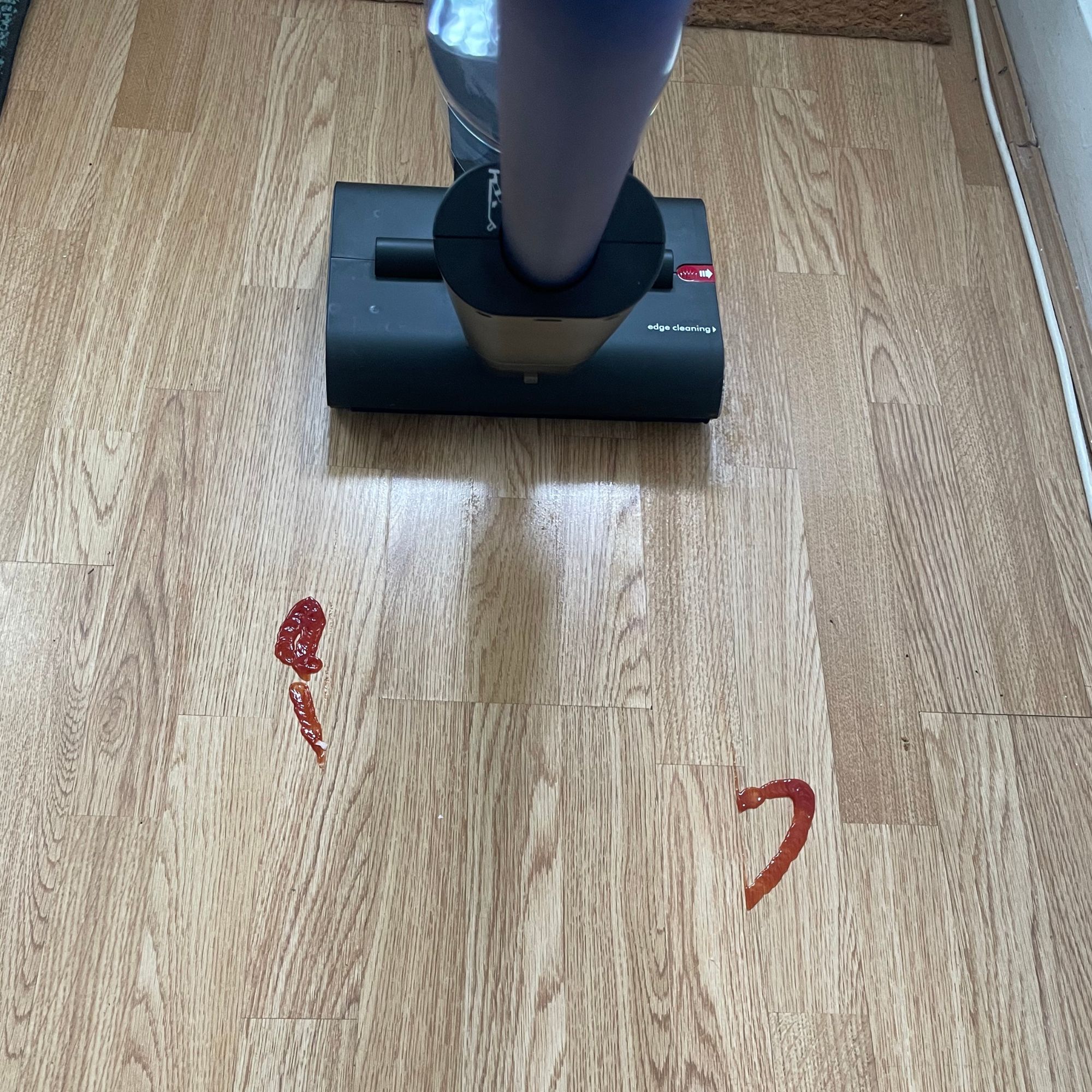
But despite its impressive ability to somehow suck up debris without any suction power, I did miss the tell-tale smell of clean floors that comes with mopping and using a floor cleaner or disinfectant. It just makes everything seem so much cleaner.
And while Dyson does not advise putting a floor cleaner into the clean water machine, I do think it would benefit from this tweak in the future. Especially as my floor (and the machine itself) still smells of ketchup.
Cleaning and maintenance
Cleaning the Dyson WashG1 couldn’t be simpler. In fact, one of the selling points of the brand’s first dedicated wet floor cleaner is that they’ve made it easier than ever to clean the machine that ultimately does the cleaning for you.
And while Dyson claims that you can simply tap the debris tray on the side of the bin and watch as the large pieces of hair and debris fall out, I didn’t find that to be the case. For me, the tray became wet during my floor cleaning session, and therefore, all of the debris stuck to the tray.
So, while I tried tapping, it was no use. In the end, I had to use a spoon to scrape it all into the bin. Despite this minor inconvenience, it was still impressed to see that - despite not being a vacuum cleaner - the WashG1 still picked up larger pieces of debris and dog hair.
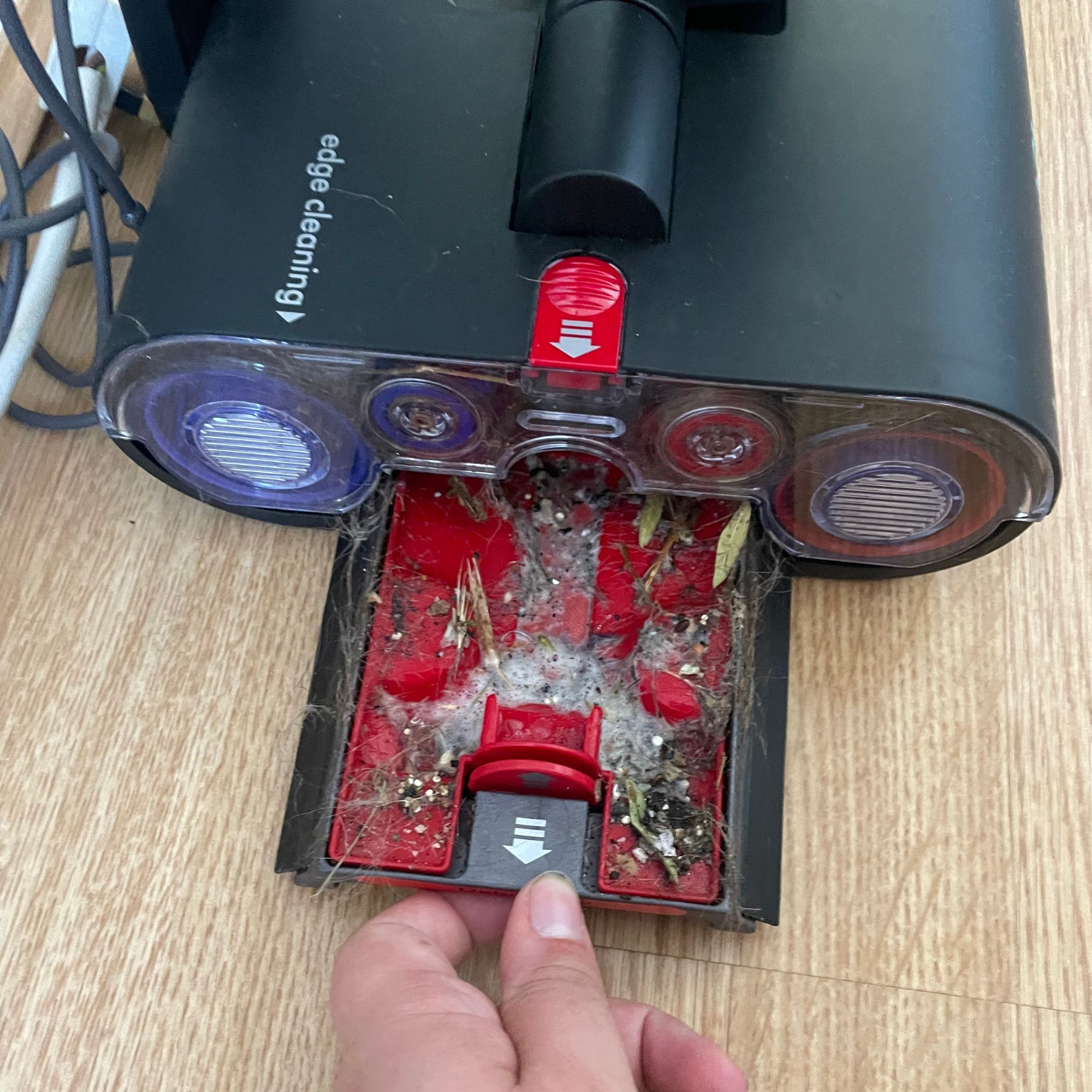
Then, I followed Dyson’s recommendation to initiate the WashG1’s self-cleaning mode - which is recommended after each use.
To initiate the self-cleaning mode, you first have to make sure that you’ve removed and cleaned the debris tray and filled up the clean water tank with fresh water. Then, you can follow the instructions on the LCD screen and press the button to start the self-cleaning process.
The self-clean mode impressed me immensely. It was over and done with in the 140 seconds that Dyson promised, and it allowed me to rest easy knowing that, after charging on the dock, the WashG1 would be completely clean and ready for another round.
After three uses of the WashG1, I also followed Dyson’s instructions to manually clean it. For this task, I cleaned both water tanks in hot, soapy water and rinsed the debris tray and rollers under a running tap.
Dyson also recommends cleaning the float assembly periodically in warm, soapy water and cleaning the Dyson filter every six months by soaking it in water. They also recommend replacing the wet cleaner rollers every six months. Apparently, it’ll be obvious when they need to be replaced as a QR code for replacements will pop up on the LCD screen.
However, Dyson has confirmed with me that customers who buy direct from them will receive a pair of additional rollers worth £45 as standard, which is a nice touch - especially as buying new rollers is another expense added to an already-expensive product.
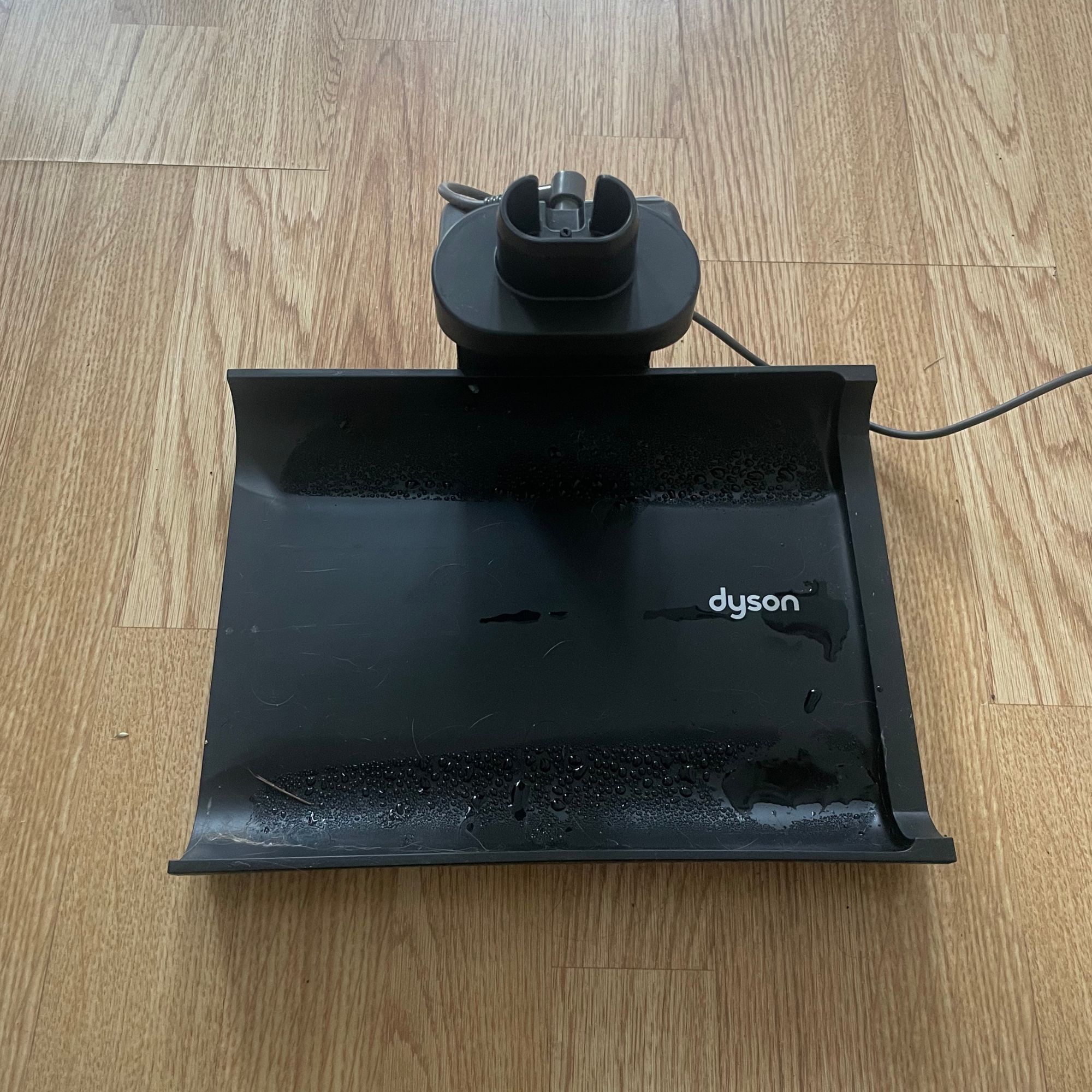
If I were to be picky, one thing I didn’t like about running the self-cleaning function immediately after use was that it didn’t allow the rollers to dry out. And almost every time I picked the WashG1 up again to use it, I found that there was both condensation and small puddles of water on the docking station.
Outside of the cleaning side of things, though, charging the machine is easy enough - although I would say that popping the machine back onto the dock does require some precision.
The battery life has also been ideal for my home, and I have yet to use it until it runs out of battery - even when using the MAX setting, which drains the battery quicker. However, I do know from Dyson’s specs that it takes around 4 hours from empty to charge back up again… which I don’t think is too bad at all.
How does it compare to similar models?
For Dyson, the WashG1 is the first of its kind. And as it’s not a vacuum cleaner and not a mop, it’s hard to compare it to anything else on the market. But if I were to find the closest comparison, it would have to be the Dyson V15 Detect Submarine - which another Ideal Home reviewer gave 4.5 stars.
However, the Submarine differs because it’s a wet/dry vacuum attachment, which gives you more scope for cleaning every area of the house - from the floors to the carpets. This is where the WashG1 lets itself down, in my opinion, as you could buy the V15 as the only appliance you need for cleaning your home. With the G1, though, you’d still need a vacuum cleaner to hand for your upholstery, carpets, and rugs.
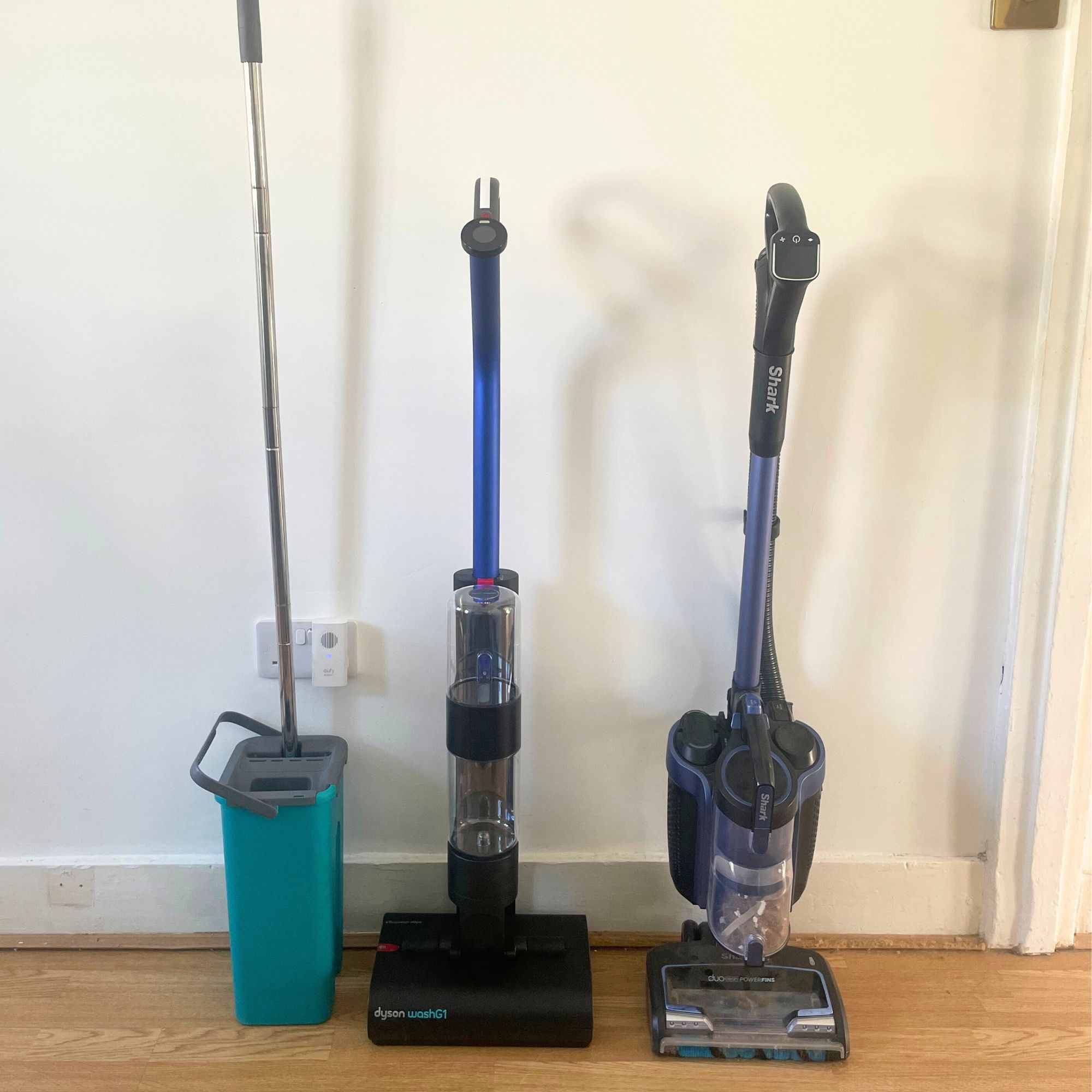
Should you buy the Dyson WashG1?
After testing the WashG1 for almost a month, I can certainly see the appeal of the machine. Using it has been a breeze, and it’s cleaned my floors more efficiently than a traditional mop. The ability to pick up both wet and dry debris despite not being a mop or vacuum is also its main selling point, in my opinion.
But am I - a small-home-dweller who lives with another adult human and a dog - the target market? I don’t think so. I think the Dyson WashG1 would suit a family living in a larger house who would take full advantage of the wet and dry debris cleaning during messy mealtimes.
Yes, where the Dyson WashG1 truly excels is not with its general cleaning (which is certainly impressive, but nothing exceptional) but instead with its ability to clean up wet and dry spills and dried-on stains without the need for steam or too much effort on the cleaner’s part.
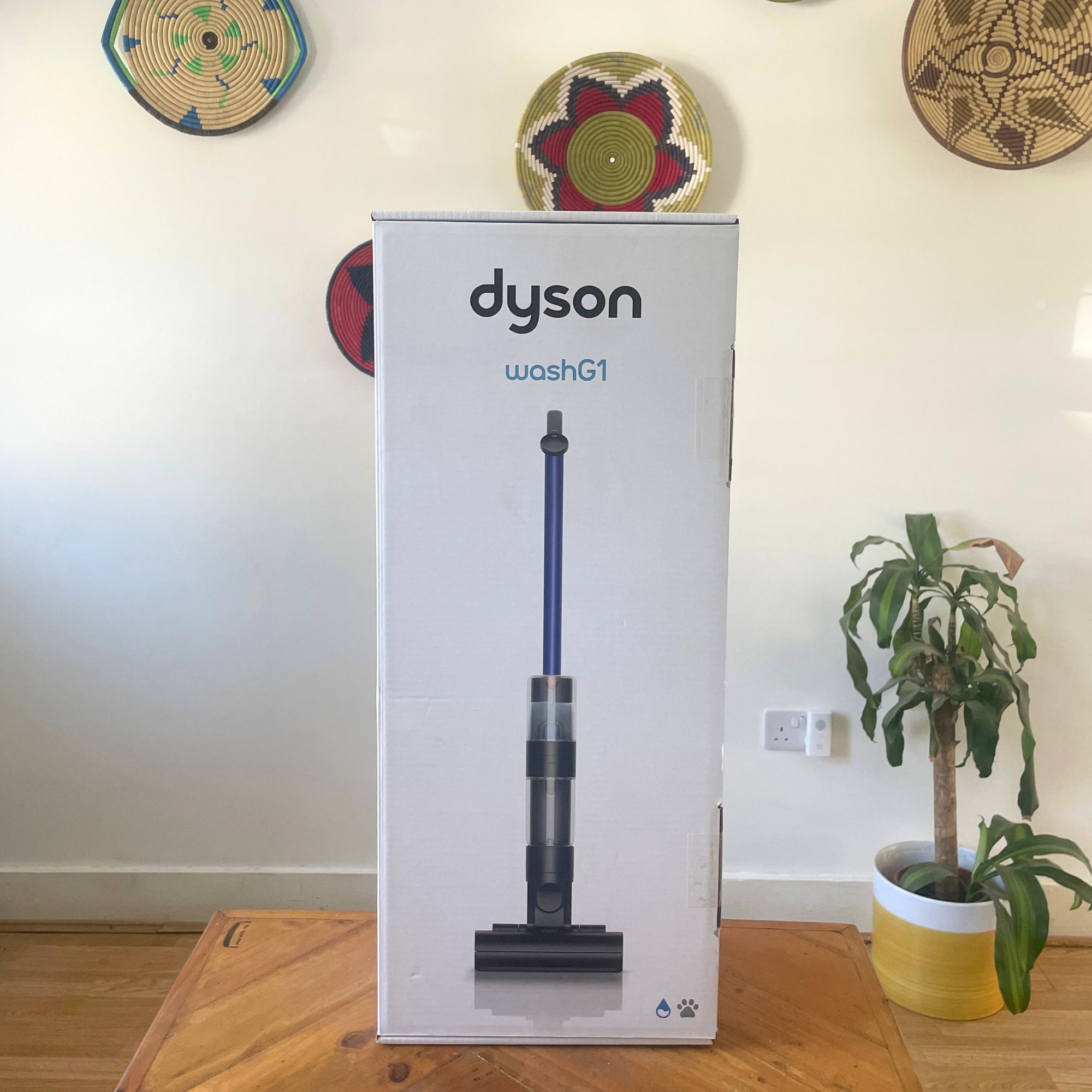
For this reason, busy parents who are constantly cleaning their children’s breakfast off the floor will definitely benefit from having this machine at their disposal.
However, it’s important to remember that the Dyson WashG1 won’t necessarily replace any other appliance in your home. You’ll still need a vacuum cleaner to vacuum up larger pieces of debris, carpets, rugs, sofas, and other upholstery, and you’ll probably still need a mop or small steam cleaner to get into the smaller nooks and crannies in your home.
For that reason, I do find the price to be rather steep. But if you can afford it, I have no doubt that you’ll be extremely happy with your purchase. However, I’d say that it’s more of a welcome addition rather than an essential purchase.
About this review, and the reviewer
Lauren is a freelance contributor who works from her small Victorian terrace in Kent, writing about cleaning, gardening, home improvements, and more. When she’s not writing, she can be found walking her dog in the forest - and then going home to clean up his muddy paw print marks.
You can find more info on how we test products at Ideal Home here. Lauren tested the WashG1 at her home for almost four weeks, trying to use it as naturally as possible - but also mimicking cleaning conundrums that other customers may experience. And while Dyson kindly gifted the WashG1 for Lauren to review and keep, this in no way impacted her honest and impartial review of the machine







